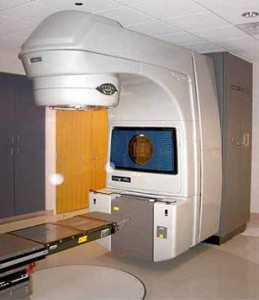Mesothelioma Linked to Therapeutic Radiation
March 4, 2015 Leave a comment
News and Views on Environmental & Toxic Tort Federal and State Legal Issues and Developments
March 4, 2015 Leave a comment
In the first study of its kind, a cohort analysis using data from the US Surveillance, Epidemiology, and End Results (SEER) Database reports that men who have undergone radiation therapy for prostate cancer are at an increased risk for developing mesothelioma. Specifically, the study concluded that use of external beam radiotherapy, the most common treatment for prostate cancer, provides a “small but detectable risk factor for mesothelioma” and that “[p]atients should be advised of the risk of radiation-induced second malignancies.” (A Farioli, F. Violante, S. Mattioli, S. Curti, D. Kriebel, Risk of mesothelioma following external beam radiotherapy for prostate cancer: a cohort analysis of SEER database, Cancer Causes Control (2013) 24: 1535 – 1545)
 A causal link between radiation and mesothelioma has been documented in numerous studies over the past decade. Until now, however, no study has specifically analyzed the causal link between radiation therapy for a specific disease and the development of mesothelioma. According to the study, the incidence rate ratios (IRR) for development of mesothelioma was increased for subjects who underwent the radiotherapy treatment when compared to non-irradiated patients, and that the IRR increased with the latency period. The study found an IRR of 1.08 for irradiated patients 0 – 4 years after treatment, an IRR of 1.31 for irradiated patients 5 – 9 years after treatment, and an IRR of 1.59 for patients irradiated 10 years or more after treatment.
A causal link between radiation and mesothelioma has been documented in numerous studies over the past decade. Until now, however, no study has specifically analyzed the causal link between radiation therapy for a specific disease and the development of mesothelioma. According to the study, the incidence rate ratios (IRR) for development of mesothelioma was increased for subjects who underwent the radiotherapy treatment when compared to non-irradiated patients, and that the IRR increased with the latency period. The study found an IRR of 1.08 for irradiated patients 0 – 4 years after treatment, an IRR of 1.31 for irradiated patients 5 – 9 years after treatment, and an IRR of 1.59 for patients irradiated 10 years or more after treatment.
The significance of this link is especially important given that both prostate cancers and mesotheliomas are most common in older men. The study notes that “mesothelioma typically presents in the fifth to seventh decades,” and the American Cancer Society notes that prostate cancer is the second most common cancer in men (after skin cancer), with 6 in 10 prostate cancers being diagnosed in men age 65 and older and the median age of diagnosis being 66. Thus, it is not uncommon to see men diagnosed with mesothelioma also having undergone treatment for prostate cancer.
Importantly, the study’s findings note an increased risk of both pleural and peritoneal mesothelioma. Though the lungs may be located outside the irradiated field, “even organs far from the irradiated field can still be significantly exposed due to scattered radiation, as well as leakage from the radiation source.” Moreover, three-dimensional conformal radiation, used frequently during the 1990’s, can expose the pleura to an equivalent radiation dose up to 25 mSv, a dose “far from insignificant if we consider that the effective dose for a standard chest radiograph ranges between .05 and .24 mSv.” Solid cancers are expected to begin forming as early as 5 years after radiation therapy.
This study provides additional reason for defense lawyers to focus on medical issues during depositions of mesothelioma plaintiffs, obtaining complete medical histories on any radiation exposures and on prostate cancer treatments in particular. This is especially important given the substantial increase in so-called “low dose” exposure cases in recent years, involving men in their 70’s or 80’s with little to no known history of asbestos exposure and no markers for such exposure on x-ray or HRCT.